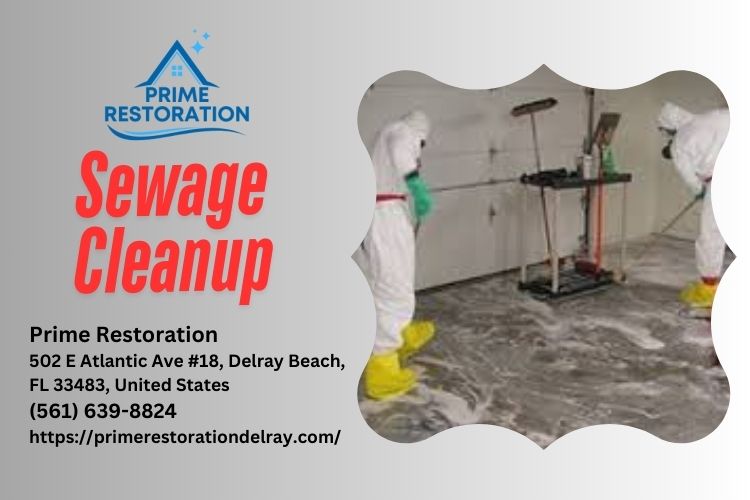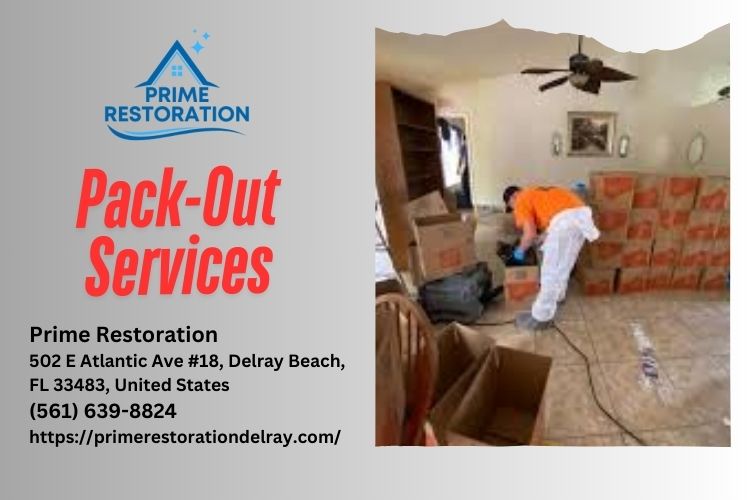Flooding is an ever-present threat in many regions, exacerbated by climate change and urban development. As residents and business owners, it's crucial to prepare for potential water damage and the ramifications that follow. In this comprehensive guide, we’ll delve into effective strategies for flood risk management, drawing insights from the experts at Prime Restoration.
Understanding Flood Risks
What Are Flood Risks?
Flood risks encompass various factors that contribute to the likelihood of flooding in a given area. This includes geographical features, weather patterns, and human activities.
Why Should You Care About Flood Risks?
Ignoring flood risks can lead to severe consequences such as property damage, health hazards, and financial loss. By understanding these risks, you can take proactive steps to mitigate them.
Planning for Future Flood Risks: Strategies from the Pros at Prime Restoration
When it comes to planning for future flood risks, knowledge is power. The pros at Prime Restoration emphasize several key strategies to effectively manage these threats.
1. Assessing Your Property’s Vulnerability
Identifying how susceptible your property is to flooding is essential.
- Conduct a Risk Assessment: Analyze your location's flood history. Check with Local Authorities: They often provide information on areas prone to flooding. Evaluate Drainage Systems: Ensure they’re functioning properly.
2. Investing in Proper Drainage Solutions
Good drainage systems are your first line of defense against flooding.
- Install French Drains: These can redirect water away from your foundation. Maintain Gutters and Downspouts: Ensure they are clear of debris. Consider Permeable Paving: This allows water to soak into the ground rather than pooling on surfaces.
Flood-Proofing Your Home or Business
3. Elevating Structures
If feasible, elevating your home or business can significantly reduce flood risks.

- Raise Electrical Systems: Keeping them above potential flood levels can prevent water damage. Use Flood Vents: These allow water to flow through instead of accumulating around structures.
4. Utilizing Water Resistant Materials
When building or renovating, opt for materials that withstand water exposure.
- Waterproof Paints and Sealants: Protect walls from moisture intrusion. Flood-Resistant Flooring Options: Consider tile or concrete that can withstand submersion.
Emergency Preparedness Plans
5. Create a Comprehensive Emergency Plan
It’s vital https://theprimerestorationco.com/water-damage-delray-beach-fl to have a plan in place before disaster strikes.
- Establish Communication Channels: Ensure everyone knows how to reach each other during an emergency. Develop Evacuation Routes: Know where you will go if evacuation becomes necessary.
6. Assemble an Emergency Kit
A well-stocked emergency kit can make all the difference during a flood event.
Essential Items Include:
- Non-perishable food Water (one gallon per person per day) Flashlight and batteries First aid supplies
Using Technology for Flood Management
7. Implement Smart Home Technology
Smart devices can help monitor conditions in real-time.
- Water Sensors: Detect leaks early before they escalate into major issues. Smart Thermostats: Manage humidity levels within homes effectively.
8. Leverage Weather Apps and Alerts
Staying informed about weather conditions is crucial for timely preparations.
Recommended Apps:
| App Name | Features | |-----------------|------------------------------------------------| | Weather Underground | Hourly forecasts & alerts | | FEMA App | Emergency preparedness tips & notifications | | NOAA Weather Radar | Real-time radar updates |
Insurance Considerations
9. Understand Flood Insurance Policies
Standard homeowner's insurance may not cover flood damage; thus, acquiring specific flood insurance is critical.
Key Points:
- Review your coverage limits Understand what is excluded Keep records of belongings for claims
10. Collaborate with Professionals
Engaging professionals like those at Prime Restoration ensures efficient management of any water-related emergencies you might face:
Prime Restoration
Address: 502 E Atlantic Ave #18, Delray Beach, FL 33483, United States
Phone: 561) 639-8824
Community-Wide Initiatives
11. Participate in Local Planning Efforts
Join community meetings focused on local infrastructure improvements aimed at reducing flooding impacts.
12. Advocate for Green Infrastructure Solutions
Encourage local governments to invest in green spaces which absorb rainwater more effectively than concrete alternatives.
The Role of Landscaping in Mitigating Flood Damage
13. Design Landscapes Wisely
Landscaping plays a crucial role in managing rainwater runoff effectively:
Landscaping Tips:
Use native plants that require less water. Create swales—shallow channels designed to manage stormwater runoff. Implement rain gardens that capture excess rainfall efficiently.Preparing Businesses for Flood Risks
14. Business Continuity Planning
Businesses should establish plans detailing how operations will continue amid flooding situations:
Identify essential functions requiring continuity. Develop backup plans including remote work options if possible. Regularly review and practice your plan with staff members.Post-Flood Recovery Strategies
15. Engage Water Damage Restoration Services
After a flooding event, quick action is paramount:

FAQs About Flooding and Water Damage Restoration
FAQ 1: What should I do immediately after my home floods?
First, turn off electrical sources if safe to do so and contact a professional water damage restoration company like Prime Restoration immediately!
FAQ 2: How long does it take to dry out a flooded home?
The drying time varies depending on severity but generally takes between three days to two weeks when using professional services effectively.
FAQ 3: Can I prevent mold growth after flooding?
Yes! Prompt removal of wet materials (carpets/drywall) along with dehumidifiers helps inhibit mold growth significantly within the first 24 hours post-flooding incident!
FAQ 4: Do I need special permits for flood-proofing renovations?
Yes! Most municipalities have specific regulations regarding modifications made towards enhancing flood resilience so always check local guidelines beforehand!
FAQ 5: Is flood insurance worth it?
Absolutely! Given that standard homeowner policies often don’t cover floods adequately—it provides peace-of-mind knowing you're protected financially against potential extensive losses due unforeseen weather events!
FAQ 6: How can I find reliable water damage restoration nearby?
Search online reviews or ask friends/family recommendations; alternatively check local listings focusing on companies specializing specifically within this industry such as Prime Restoration who offer exceptional service experiences!
Conclusion
In conclusion, preparing for future flood risks involves a multifaceted approach that combines proactive measures with responsive strategies post-event occurrences—a testament reaffirmed by professionals like those at Prime Restoration who exemplify commitment towards ensuring properties recover swiftly while minimizing losses incurred throughout said processes! By staying informed about risks associated with floods while implementing sound mitigation practices—everyone stands better chances safeguarding their homes/communities against inevitable devastation brought forth by nature’s wrath!

This comprehensive approach ensures readiness against future floods while fostering community resilience as we navigate through unpredictable weather patterns together!